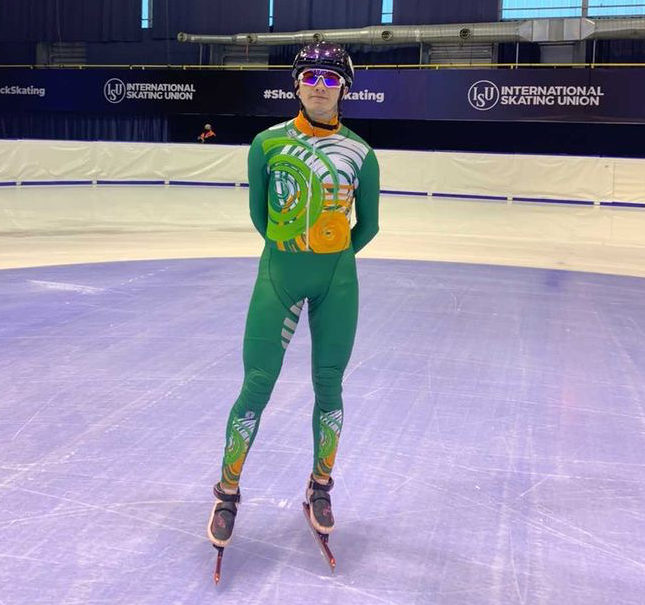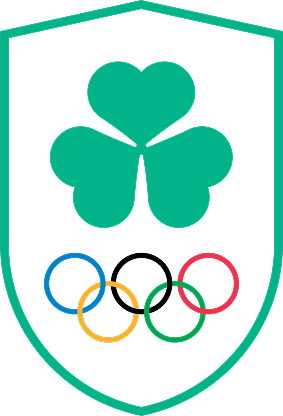The first official World Ice Skating Day took place on Sunday, December 4th. Skaters from around the country alongside the Ice-Skating Association of Ireland came together to celebrate. The day featured an Ice Parade of Nations and Figure Skating at Dundrum on Ice.

The origins of ice-skating in Ireland date back to the Victorian times. In 1876 the Earl of Kilmorey spent over thirty thousand pounds to erect the Mourne Hotel in Rostrevor, which held a large concert hall, public gardens and a skating rink! The Cork Skating Rink was operational in 1878, and in the 1880s, Famous Irish poet W.B. Yeats learned how to skate on the frozen Lough Gill in Co. Sligo!
In 1980 the Dublin Ice Rink was opened in Dolphin Barn, which was popular until it closed in 1997. Today there is an ice-rink in Belfast, which attracts people from all around the country, and a strong lobby for an ice-facility to be built in the Republic of Ireland to cater for the interest. Over ten weeks during winter, pop up rinks around the country attract up to 300,000 skaters annually.
Figure skating is the oldest sport on the Olympic Winter Games programme. It was contested at the 1908 London Games and again in 1920 in Antwerp. Men’s, women’s and pairs were the three events contested until 1972. Since 1976, ice dancing has been the fourth event in the programme, proving a great success.
The medal events include singles, pairs and ice dance. Ice dance is a version of pairs skating which draws on ballroom dancing and has been included as a medal event since the 1976 Games in Innsbruck, Austria.
Speed skating (long track speed skating) has been part of the Winter Olympic programme since 1924. The sport involves athletes being timed over a specific distance around a 400m oval ice track. Skaters race in pairs, counter-clockwise and change lanes during each lap over a variety of distances ranging from 500m – 5000m.
Short Track Speed Skating was introduced to the Winter Olympic programme in 1992. It involves a pack of four to six skaters racing against each other in heats on a tight oval track (111.12m) over a variety of racing distances ranging from 100m – 1000m and includes a relay event.
Ireland are regular contesters on the international circuit, and the starting point to the ice-skating Olympic journey was when Clara Peters was awarded an IOC scholarship in 2012. In 2022 Short Track Skater Liam O’Brien came close to being our first Olympian, missing out on qualification by one spot. Our first Youth skater competed in figure skating at the Winter European Youth Olympic Festival in Vuokatti, Finland, in 2022 with Elizabeth Golding.

In the men’s figure skating programme Sam McAllister and Conor Stakelum have been flying the Irish flag for several years, and Ryan and Sean McAnuff have shown strong representation in the Short Track Programme, as well as Speed Skater Tara Donoghue. In the women’s figure skating programme Sophia Tkacheva is one to watch. For the first time ever Ireland has an ice-dancing team, with siblings Laura and Kevin Hegarty competing.
We caught up with Diana Haemer on the day of the event, who grew up Ice Skating in Virginia (USA) and competed at the highest level in the United States but now lives and coaches in Ireland.
- First who are you, where did you grow up, and how did you start skating and have you ever competed?
I grew up skating in northern Virginia (USA) for the Washington Figure Skating Club and competed as high as the Junior level. At the peak of my competitive career, I could land double axels as well as triple salchows, loops, and toe loops and was working on triple flips & lutzes. However, at the age of 17 I suffered a severe concussion and was off the ice for one year. Upon returning to skating, I tested into the highest level in US Figure Skating and became a triple Gold Medalist in Moves in the Field, Freestyle, and Solo Ice Dancing. In recent years I’ve choreographed routines to raise money and awareness for certain causes, such as Ukrainian refugees in America.
- What do you like most about skating?
I love the independence skating affords. There are few other sports that require one to be both creative and strong, even tough. Skating teaches resilience, for you can never learn if you don’t get back up and try again!
- How do you learn new skills/moves?
Usually, I ask my coaches to help me learn new skills that I see when watching international competitions such as the US or European Championships, which take place once a year typically in January or February. My favorite elements are spins, and I often try to come up with interesting combinations that are inspired by the skaters I see on TV, such as Mao Asada or Mirai Nagasu.
- How often do you train/coach per week?
When competing I trained on the ice 5 days a week, 3 hours a day and off the ice 3-4 times a week, 1-2 hours a day. Now that I live in Ireland, I unfortunately only have a few minutes of ice time before group lessons start at Dundrum on weekend mornings. All of the other sessions are too crowded for me to attempt any difficult jumps or spins. Since the Irish rinks are half the size of a standard rink, I need to make sure there is enough space and the other skaters on the ice are advanced enough to look out for each other when practicing.
- What would be your top 3 tips for people wanting to start skating?
I began skating when my mother took me to a birthday party at the age of 4; I fell in love with the ice and she soon signed me up for group lessons. My advice would be to sign up for lessons, skate as often as possible, and get inspired by watching famous skaters during the competitive season, which runs throughout the fall and winter months!
- Is it hard to train/compete/coach in Ireland without a permanent ice facility?
It is extremely hard to improve upon my skating without consistent access to the ice. Most people do not have the time or money to travel to Belfast and train seriously, which is hindering Ireland’s ability to produce and foster highly competitive skaters. I lived in the UK for one year and was lucky to have a year-round rink in the city close enough that I could walk to it. Even though I did not take lessons, I was able to work on my double jumps, layback spins, and improve my choreography skills. I think the convenience of public transport within County Dublin would make it easy for people to travel to and from a rink should one be built in the area. There is certainly enough interest in the sport: for example, the Emerald Skate program fills up within mere hours of its launch each year! Even though figure skating is an individual sport, skaters often are motivated by their peers to jump higher, skate faster, and achieve more. Indeed, most of my closest friends growing up were my fellow skaters; we formed a strong bond despite our highly competitive environment. Having a core group of advanced athletes who are constantly improving also inspires the next generation who are just beginning their skating journeys. But without a permanent ice facility, such a community cannot be had.
